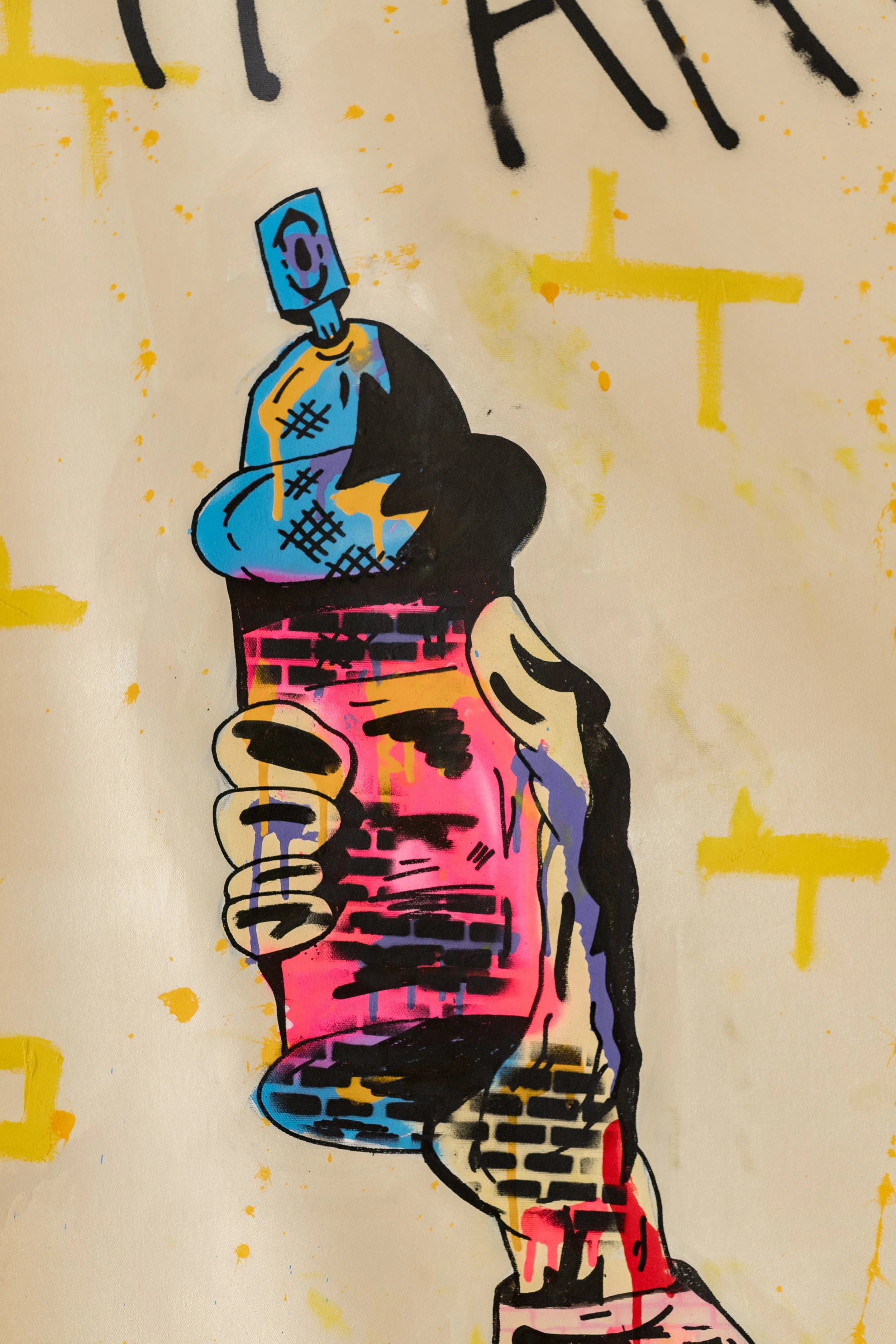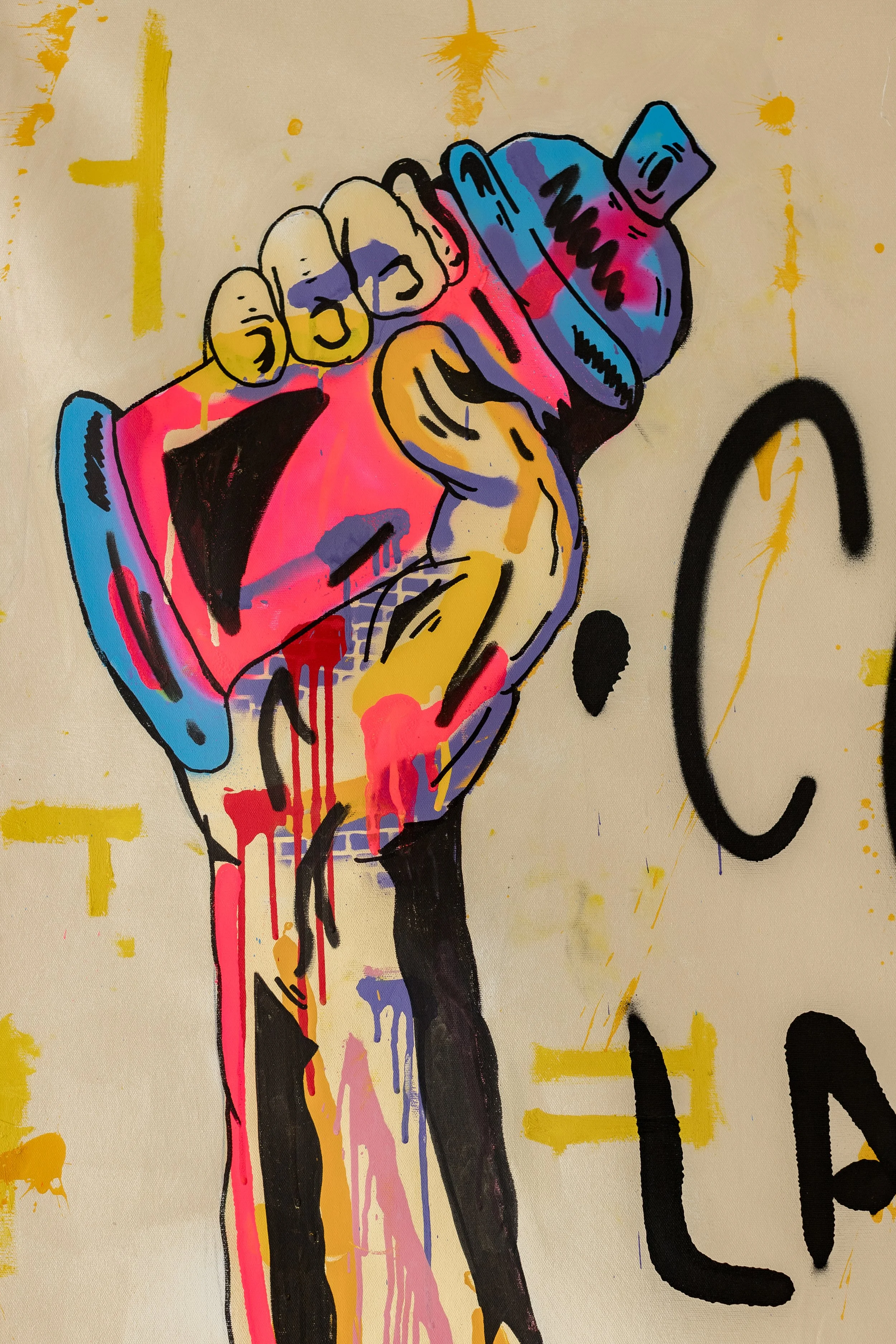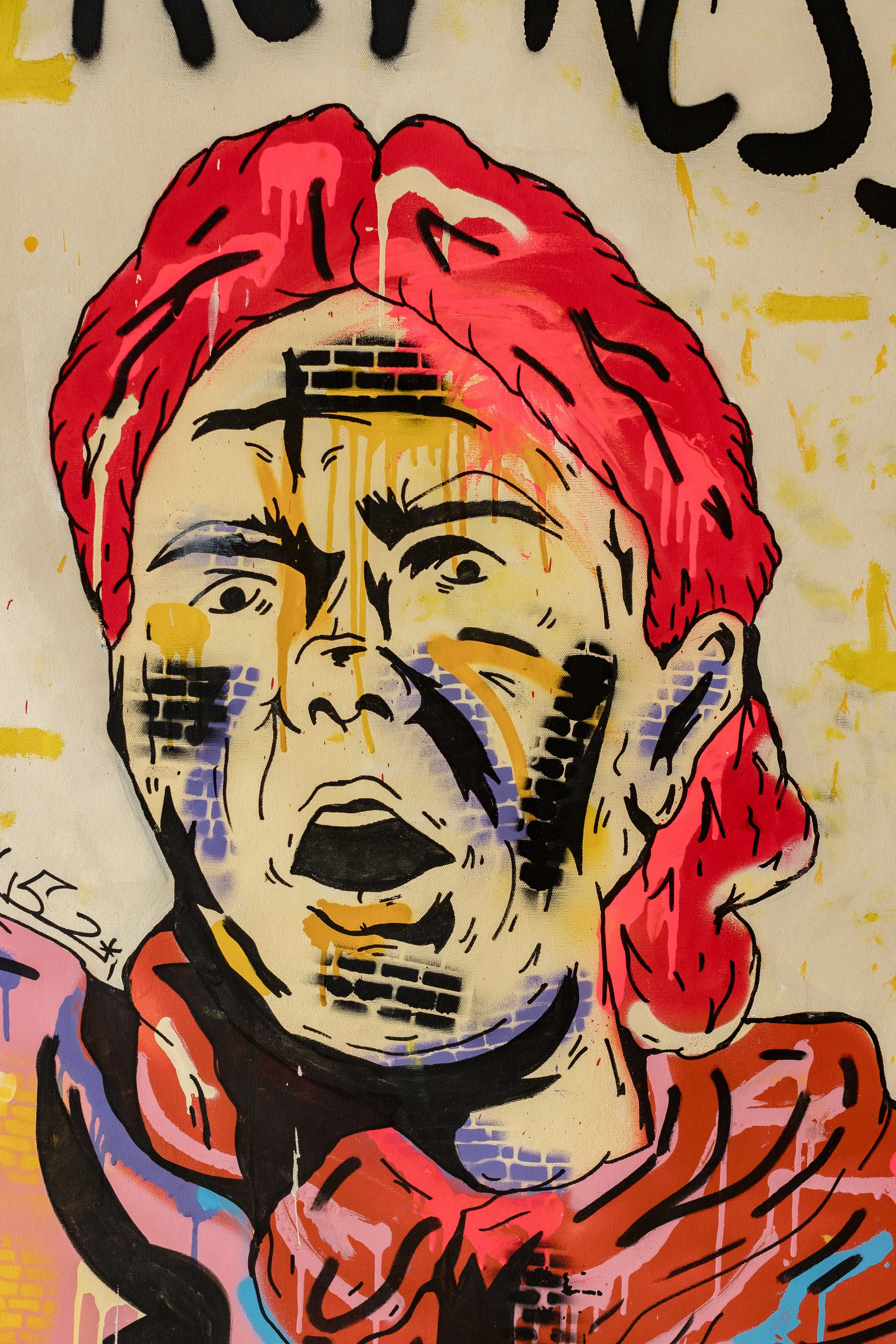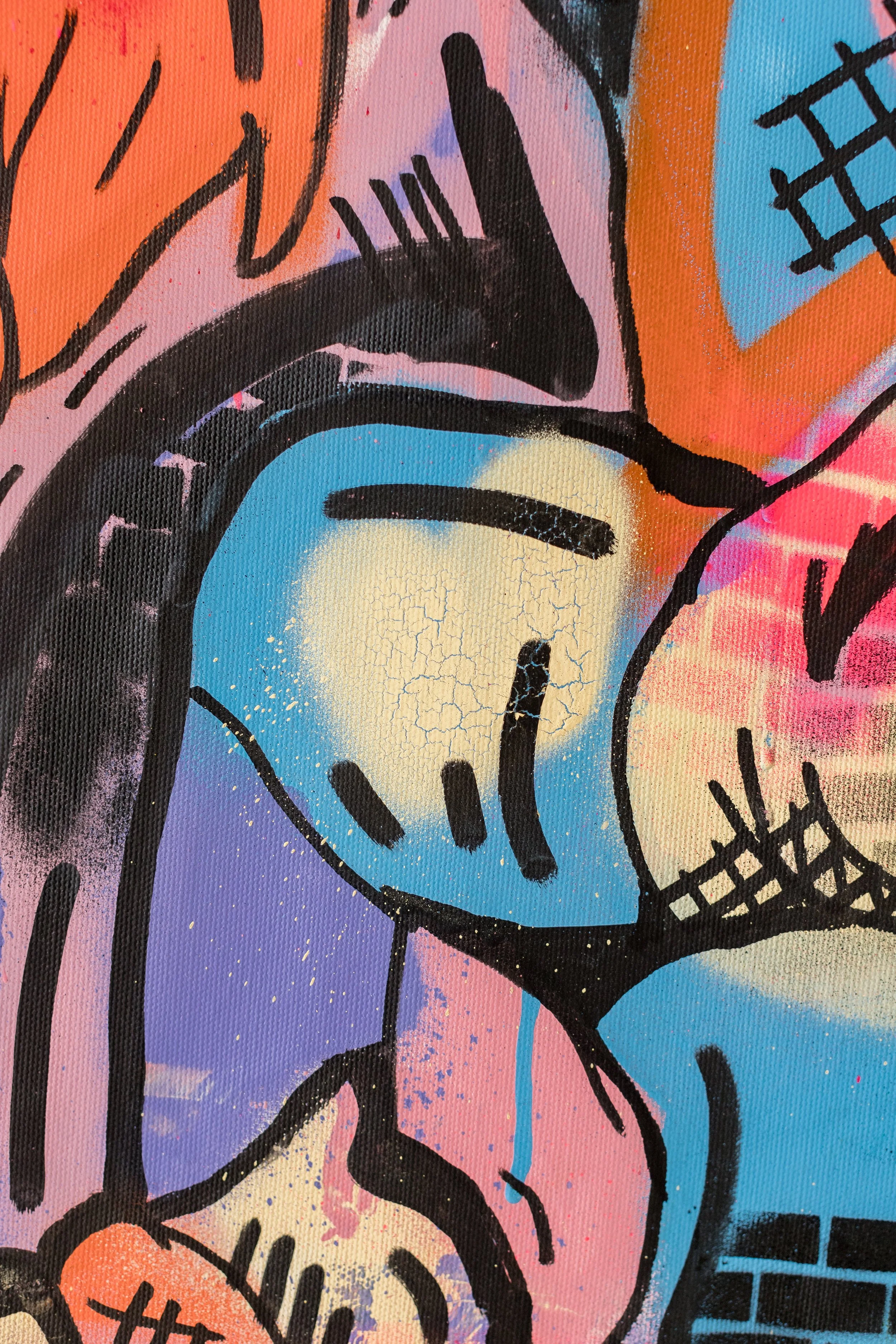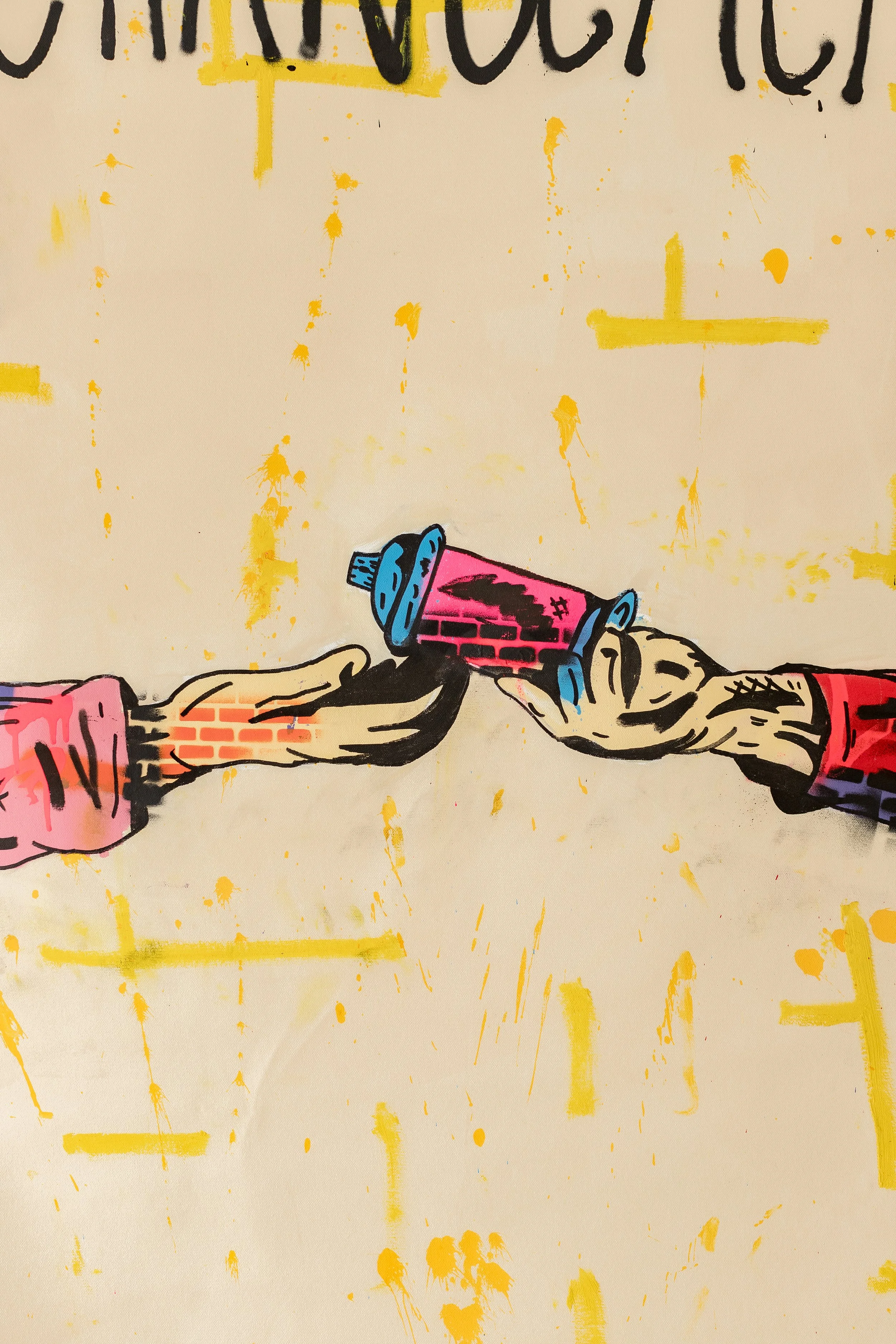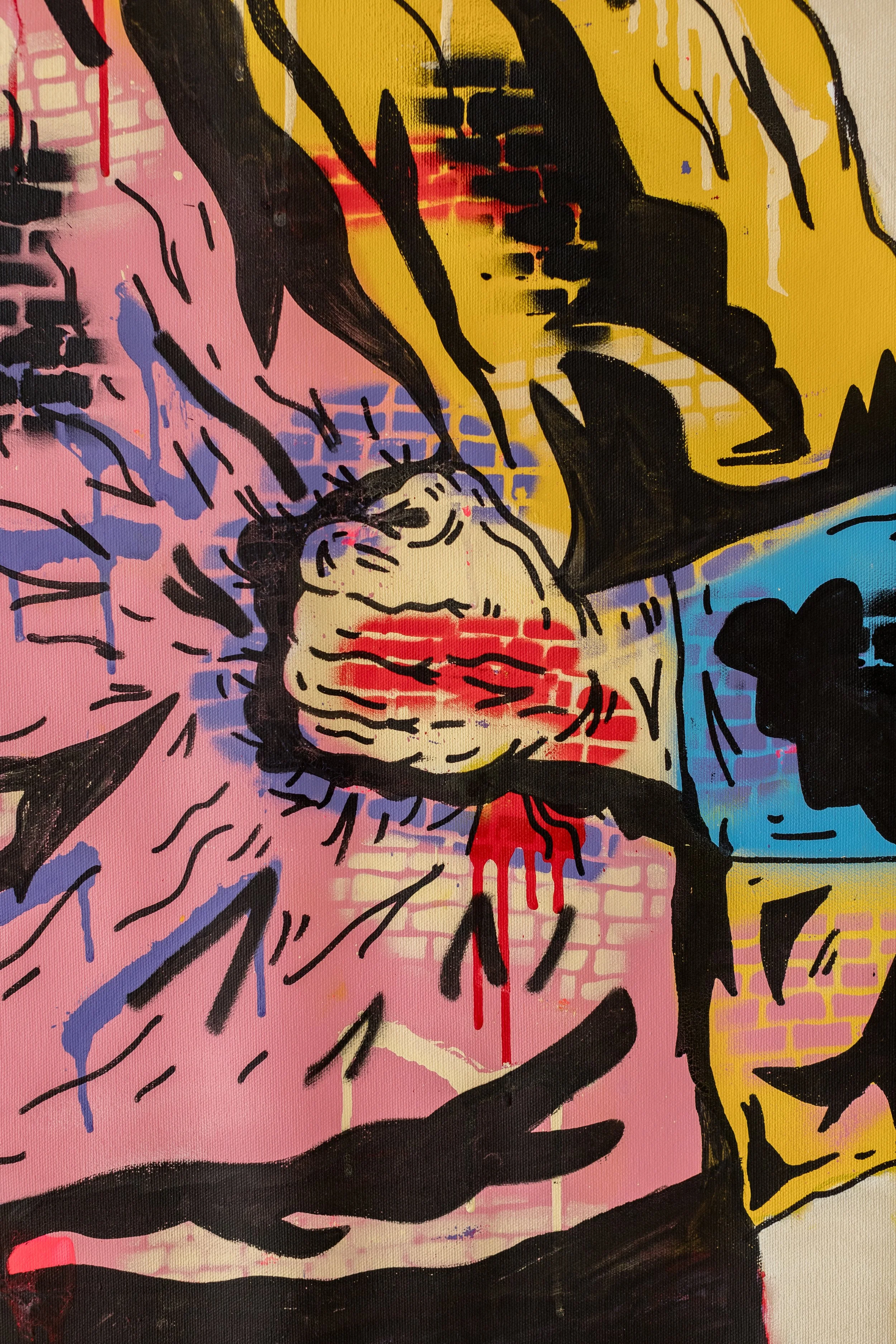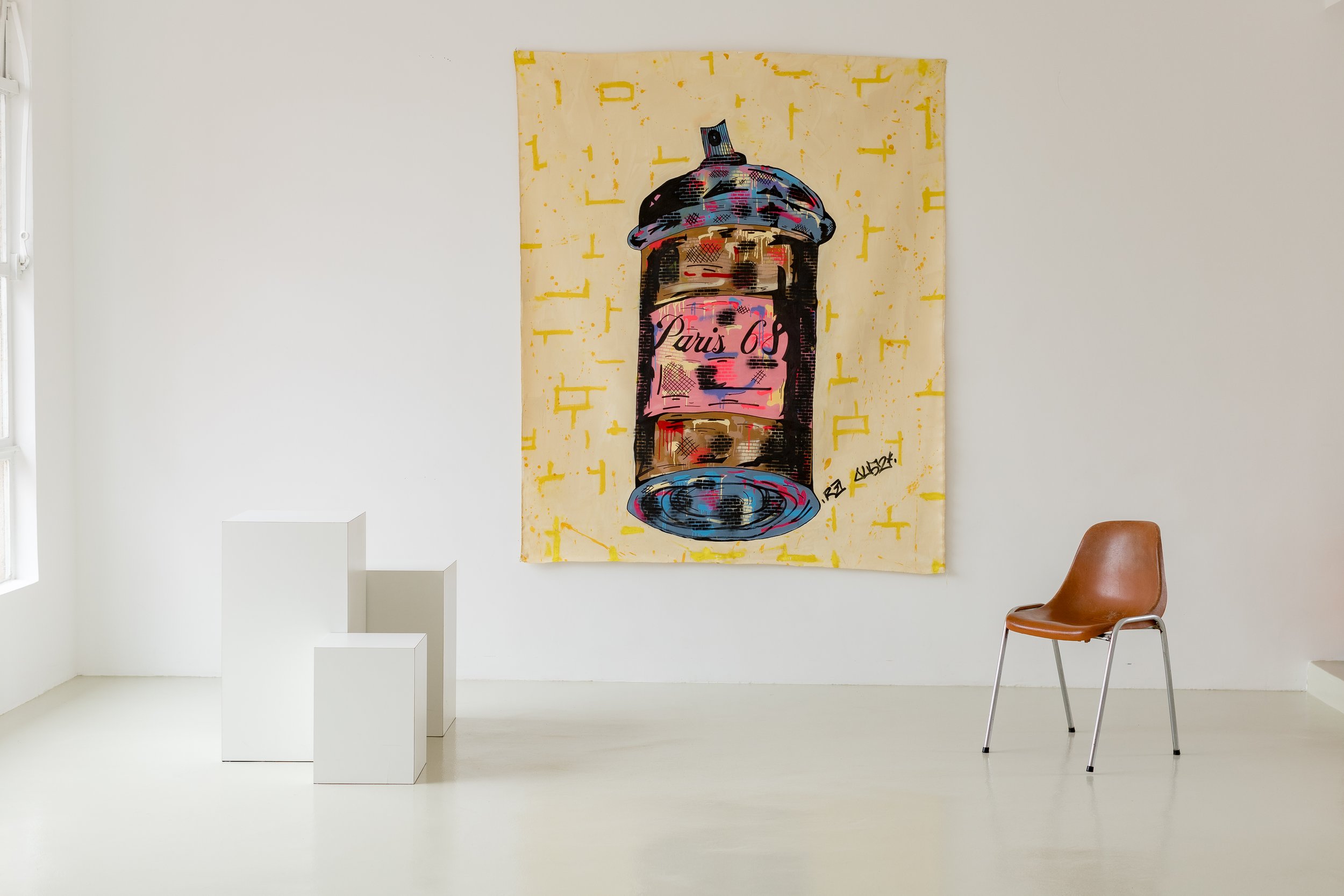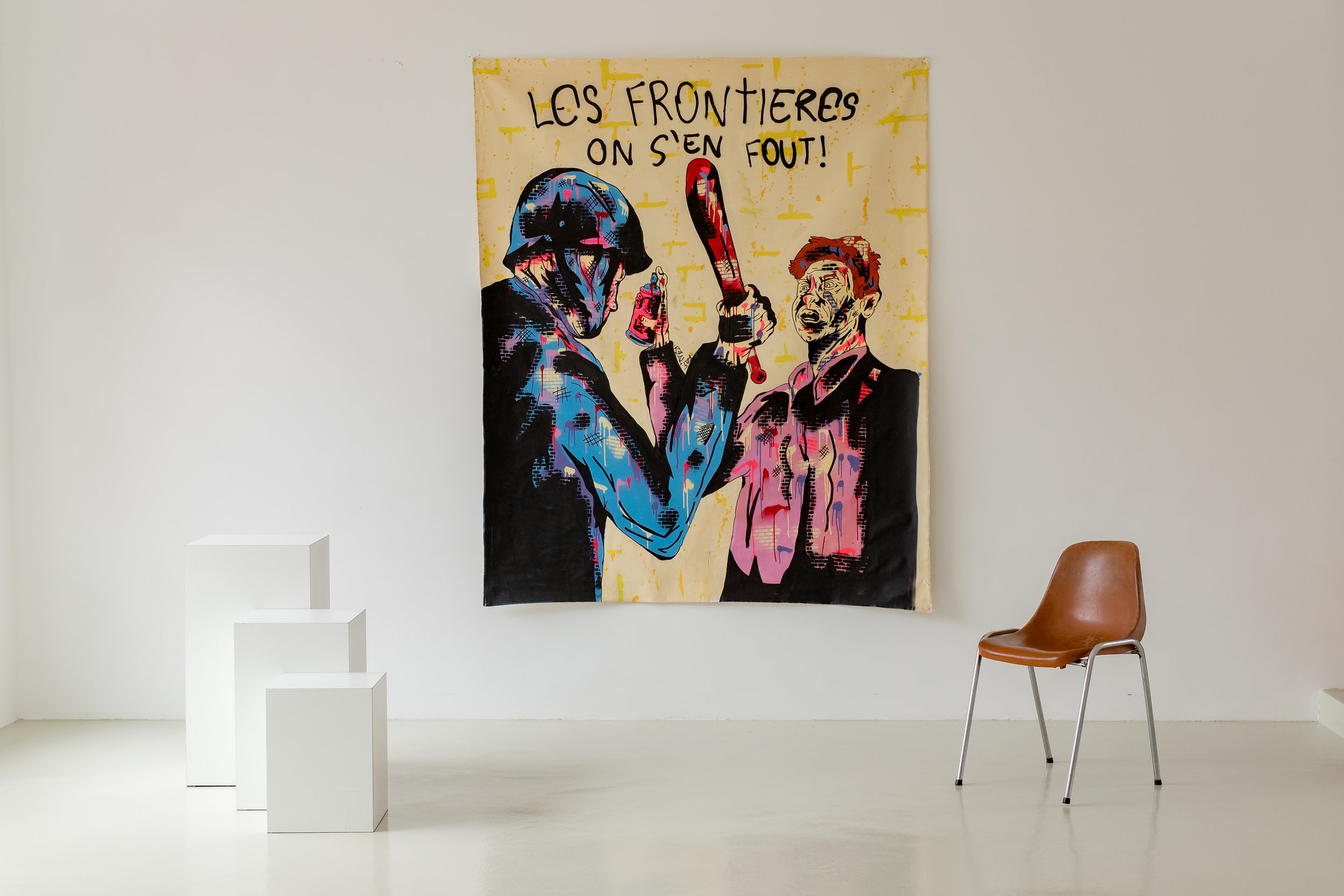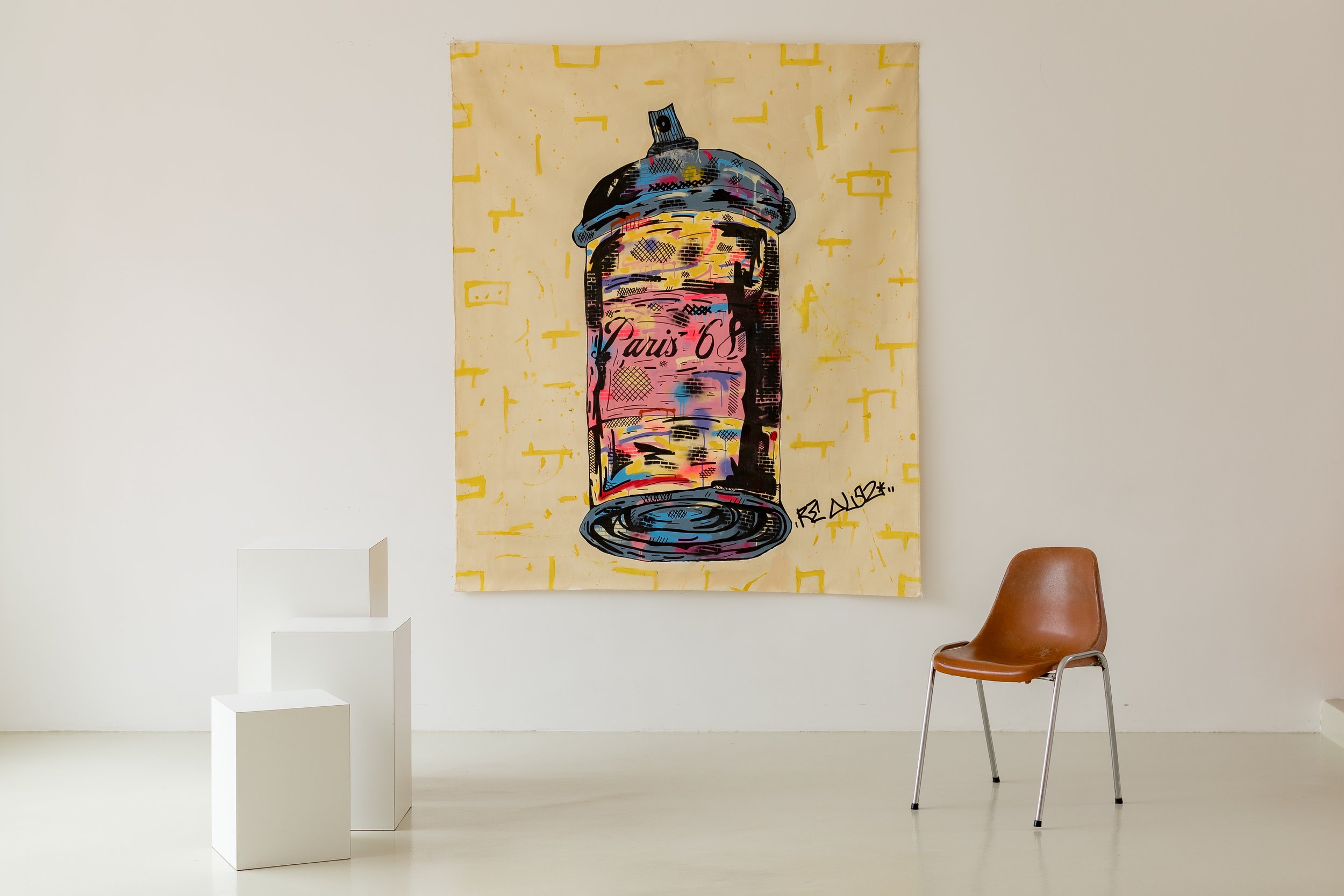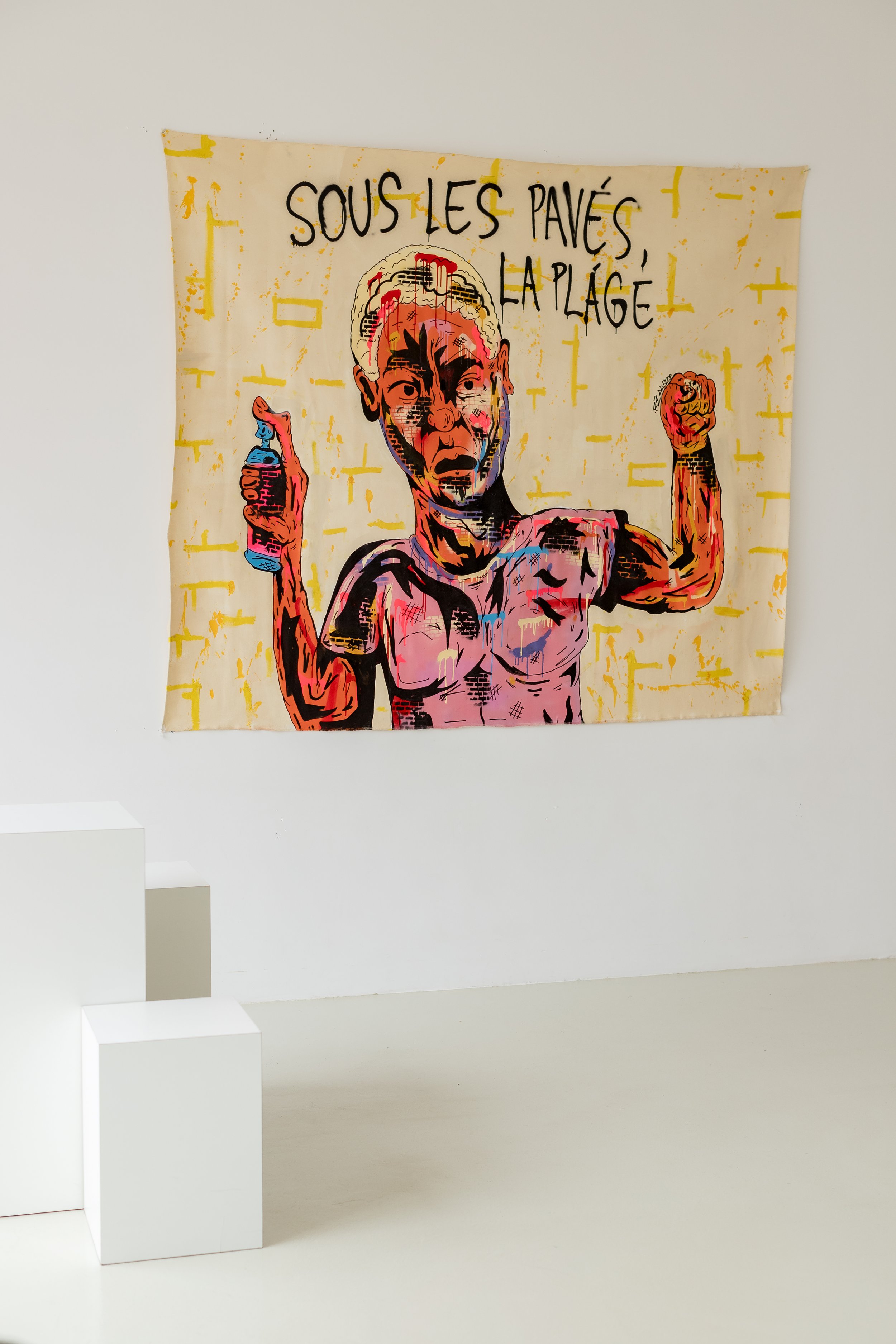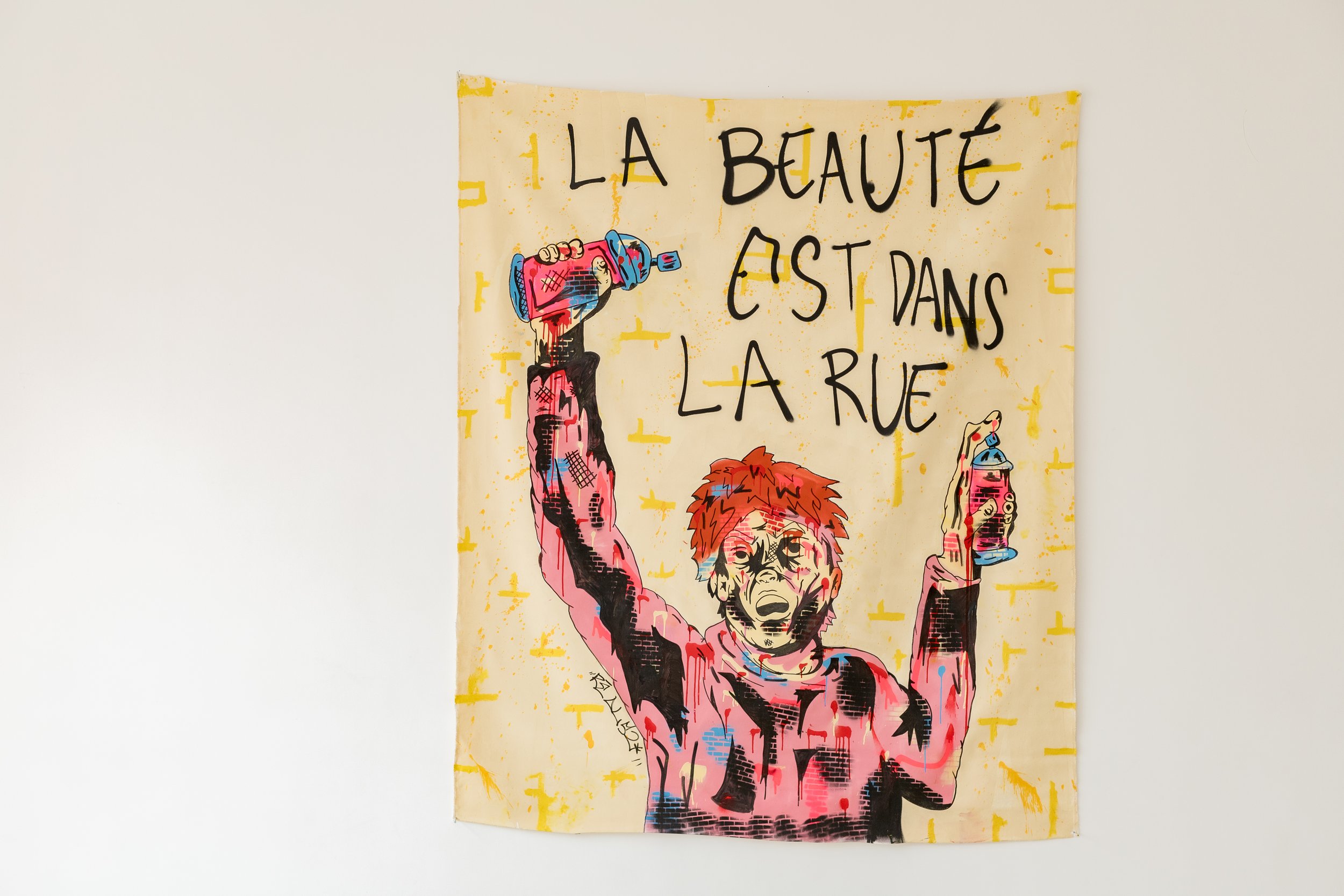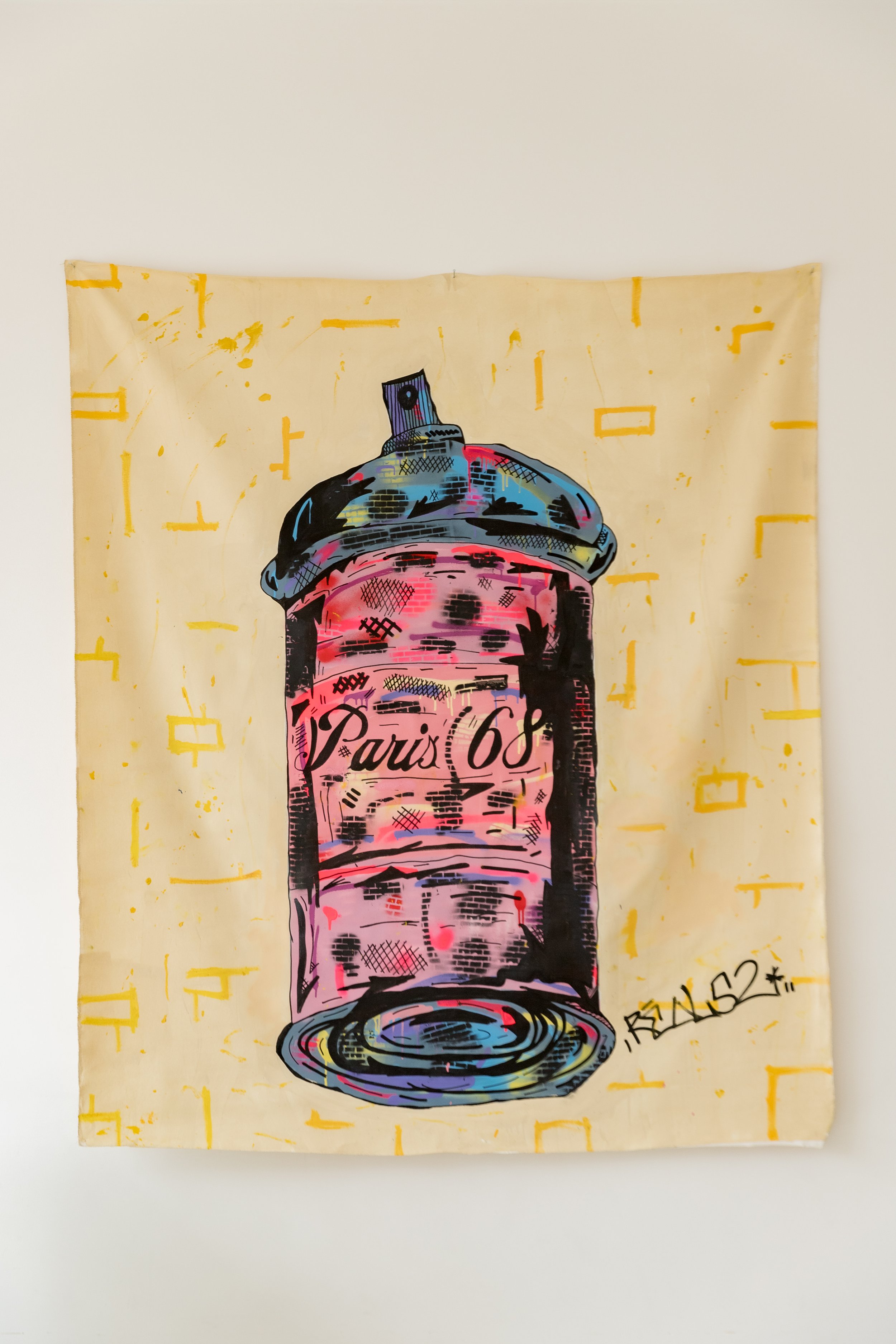
PARIS 68
Pedro`s philosophy has led him to the May 1968 protests in Paris. In painting, Pedro returns to the french streets as an investigator of the visual language of myth. His works reinterpret the very nature of protest, confronting the viewer with the tension between violence and beauty, chaos and change. In doing so, Real extends his long-standing interest in the ways violence is commodified, reframing protest and art not as distanced objects of the past but as living, breathing myth that continues to evolve.
Pedro’s work stands at the threshold where history becomes an allegory. Rather than resolve the contradictions of protest, beauty and rupture, he holds them, elevating their intensity through form. His technique mythologizes the act of rebellion. By casting demonstrators in the light of antique heroes, he reminds us that the imagery of resistance is meant to endure. PARIS 68 insists that democracy, when powered through art, becomes not a fixed idea but a legend: ever at risk, ever unfinished.
CANVAS PICTURES BY PEDRO MAMORÉ
PARIS 68 studio footage.
Direction and editing by Mateus “Magro” Ceccato. shot in curitiba, brazil in 2023.
